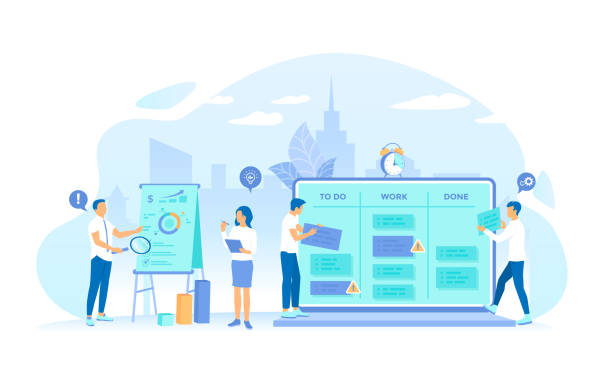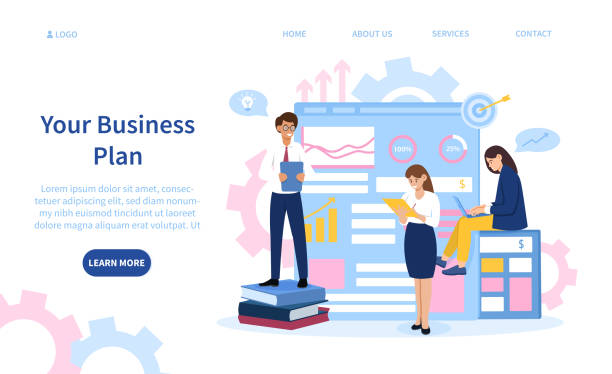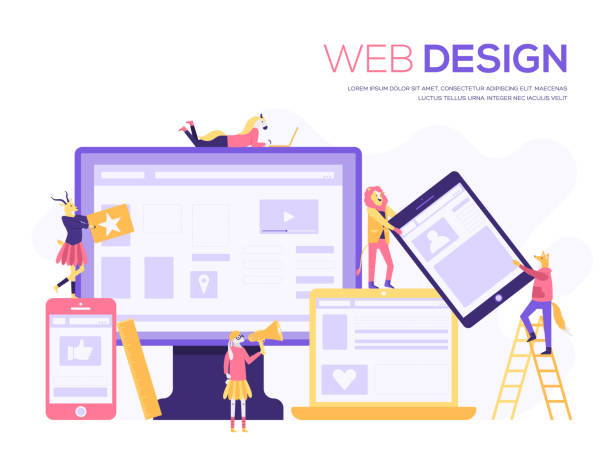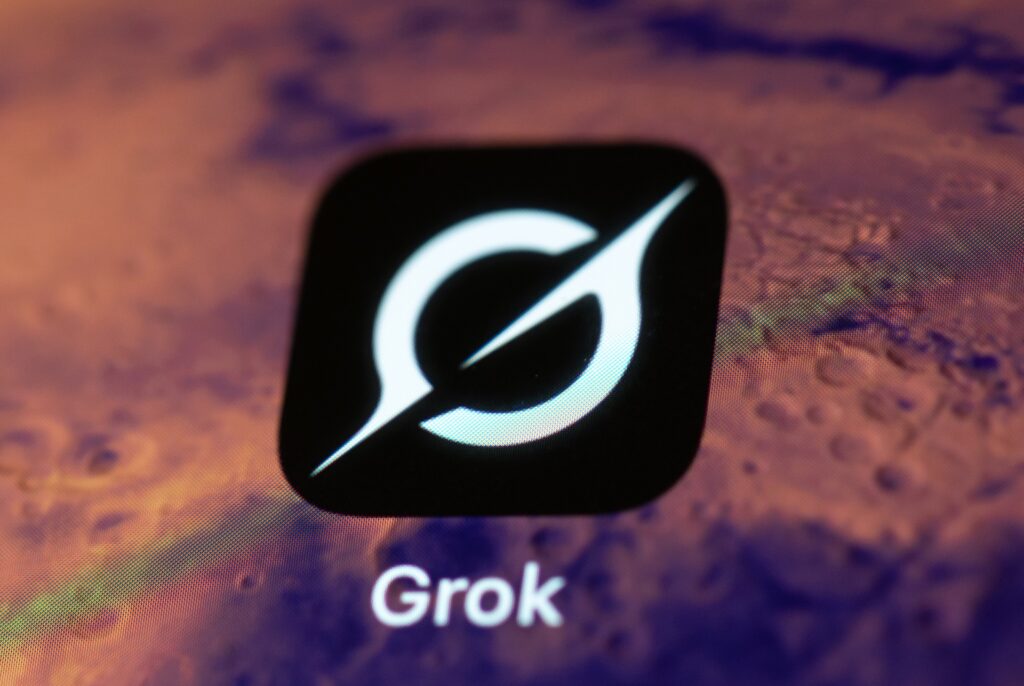An Introduction to the Importance of #Multilingual_Website_Design in the Global Era

In today’s world, where geographical boundaries have less meaning in virtual space, #connecting with global audiences has become increasingly important.
#Multilingual_website_design is not just a competitive advantage, but a necessity for any business looking to expand its operations on an international scale.
A #multilingual_website allows you to deliver your message in the native language of users in different parts of the world, which in turn leads to increased trust, improved user experience, and ultimately business growth.
This #educational approach helps you get acquainted with the basic principles and vital importance of this type of design.
Without a multilingual website, many invaluable global opportunities will be lost, and your sphere of influence will be limited to a specific group of users.
Therefore, understanding the necessity of #developing a site accessible to all languages is the first step in this journey.
Is your current e-commerce site design causing you to lose customers and sales?
Rasaweb is your solution with modern and user-friendly e-commerce website design!
✅ Significant increase in conversion rates and sales
✅ Strong branding and building customer trust
⚡ Get free e-commerce website design consultation from Rasaweb!
Why Do We Need Multilingual Website Design? Advantages and Challenges

The need for multilingual website design stems from the fact that today’s world has become a global village.
Accessing new markets and attracting international customers is practically impossible without a communication platform in different languages.
The benefits of this include increased market reach, improved international SEO ranking, enhanced brand credibility, and providing a more personalized user experience.
A multilingual site helps you to attract the trust of foreign customers and improve conversion rates.
However, there are also challenges along this path; including choosing appropriate languages, accurate and culturally relevant content translation, issues related to continuous maintenance and updates, and managing multilingual SEO.
This section provides a comprehensive analytical view on why you should move towards multilingual website design and what obstacles you might encounter.
It is also questionable how to strike a balance between providing a native experience and maintaining brand consistency.
Choosing the Right Technology and Tools for Multilingual Website Design

Choosing the right platform and tools is the cornerstone of a successful multilingual website design.
There are numerous options, from Content Management Systems (CMS) like WordPress with plugins such as WPML or Polylang, to custom solutions and programming frameworks for this purpose.
Each of these options has its own advantages and disadvantages that must be weighed against the project’s needs and budget.
For example, while WordPress plugins offer a quick and relatively easy solution, they may have limitations for very large and complex projects.
A specialized approach in tool selection ensures optimization of the development process and reduction of long-term costs.
The following table compares some common approaches in multilingual design:
| Approach | Advantages | Disadvantages |
|---|---|---|
| CMS with Multilingual Plugin | Quick installation and setup, large user community, low initial cost | Plugin dependency, potential slowness on large sites, limited flexibility |
| Subdomains | Easy SEO management, content separation | Need for separate CMS installation for each language |
| Subdirectories | Easier SEO optimization, central management | Requires precise structuring from the beginning |
| Dedicated Domain for Each Language | Best user experience and SEO, complete independence | High cost, more complex management |
This table provides an initial guidance for choosing the appropriate method for multilingual website development and helps you make a more informed decision.
Content Creation and Localization Beyond Simple Translation in Multilingual Website Design

Content is king, but in multilingual website design, localized content is the true king.
Localization is not just about translating words from one language to another; it involves adapting culture, idioms, units of measurement, images, and even colors to the target audience.
A good explanatory content must consider these points.
For instance, a joke or an image might be humorous in one culture but offensive in another.
The translation team must not only be fluent in the target language but also have a complete understanding of its culture and values.
This approach ensures that your message is not only correctly conveyed but also localized and deeply connects with the audience.
A successful multilingual website design depends on a deep understanding of these subtle differences.
Investing in professional localization will yield a high return on investment in attracting and retaining international customers and prevents cultural misunderstandings.
Are you bothered by losing customers due to your e-commerce site’s outdated appearance or slow speed? Rasaweb’s expert team solves these problems with professional e-commerce website design!
✅ Increase customer trust and your brand’s credibility
✅ Stunning speed and excellent user experience
Get a free consultation with Rasaweb right now ⚡
How Does International SEO Work for Multilingual Website Design?

Multilingual website design is incomplete without a strong international SEO strategy.
Search engines like Google need to understand which geographical region or specific language each version of your site is intended for.
Using hreflang tags, appropriate URL structures (subdirectories, subdomains, or dedicated domains), and multilingual XML sitemaps are among the key tools for this purpose.
This specialized section helps you properly optimize your site for search engines on a global scale.
Choosing appropriate keywords for each language and culture is another important consideration.
For example, the word “ماشین” in Persian and “car” in English might be equivalents, but in some languages, choosing localized keywords can make a significant difference in search results.
Your SEO strategy must be customized for each language and country to ensure your content is correctly found by target audiences.
This guidance helps you prevent a drop in international search rankings and increase your site’s traffic.
User Experience (UX) and Engaging Multilingual Website Design

A multilingual website design must go beyond mere translation and optimize the user experience (UX) for each language and culture.
This means paying attention to details such as writing direction (right-to-left for Persian/Arabic, left-to-right for English), appropriate fonts, number and date formatting, and even symbols and icons that may have different meanings in various cultures.
An engaging and user-friendly design can turn visitors into loyal customers.
Ensuring that navigation menus are easily understandable and users can seamlessly switch between languages is of utmost importance.
The main goal is for the user to feel that the website has been designed for them and their language.
This includes providing relevant content, culturally appropriate images, and intuitive navigation flow.
UX is a key element in the success of multilingual website design that is often overlooked.
A poor user experience can render even the best content ineffective.
Continuous Maintenance and Updates of a Multilingual Site

Maintaining and updating a multilingual website is an ongoing process.
New content, changes in products or services, and company news must be translated and localized into all languages.
This informational process must be carefully managed to prevent information imbalance between different language versions.
Using a robust content management system with built-in multilingual capabilities or specialized plugins simplifies this process.
Additionally, monitoring SEO performance for each language, updating keywords, and tracking competitors in various global markets are ongoing tasks.
Ensuring that all internal and external links and resources work correctly across all language versions is crucial.
This is vital guidance for maintaining your site’s health and efficiency in the long run.
The following table provides a plan for multilingual site maintenance:
| Task | Frequency | Responsible |
|---|---|---|
| Content Update | Weekly/Monthly | Content Team/Translator |
| Broken Link Check | Monthly | Site Manager |
| International SEO Monitoring | Monthly | SEO Specialist |
| Browser Compatibility Check | Quarterly | Development Team |
Efficient management of these tasks will contribute to the longevity and effectiveness of your multilingual website design in the long run.
Common Mistakes in Multilingual Website Design and Ways to Avoid Them

Many businesses make mistakes in the process of multilingual website design that can lead to wasted time and resources.
One of the most common mistakes is machine translation without human review, which often results in poor quality and even ridiculous content.
Ignoring international SEO, lack of cultural localization, and inadequate technical support for all languages are other common errors.
As thought-provoking content, are you truly ready to address all cultural details and nuances for your audience? To avoid these mistakes, investing in professional native translators, collaborating with international SEO specialists, and conducting extensive user tests in each target market are essential.
Additionally, having a clear strategy for content management and updates helps prevent confusion and inconsistency.
An effective multilingual website design requires meticulous planning and flawless execution, utilizing an analytical approach to identify and overcome obstacles.
Is your company’s website as professional and trustworthy as it should be? With specialized corporate website design by Rasaweb, create an online presence that reflects your credibility and attracts more customers.
✅ Building a powerful and professional image for your brand
✅ Converting visitors into real customers
⚡ Get a free consultation right now!
The Future of Multilingual Website Design and New Trends
![]()
The web industry is rapidly evolving, and multilingual website design is no exception.
New trends include the use of AI for smarter translation and localization, the increasing importance of multilingual video content, and fully personalized user experiences based on the user’s geographical location and language.
This news section provides you with an outlook on the future and the evolution of multilingual website design.
Additionally, the increased use of Voice Search and the importance of optimizing for it in different languages are other challenges and opportunities ahead.
Web developers and designers must constantly keep pace with these changes to ensure websites remain attractive and effective for global audiences not only today but also in the future.
It is anticipated that more analytical approaches will be employed to evaluate user behavior in a multilingual environment to optimize the user experience.
These trends indicate that beyond a multilingual site, we are looking for a multicultural communication ecosystem.
Conclusion and Next Steps Towards Business Globalization

Multilingual website design is a strategic investment for any business seeking to compete in the global market.
This process is not just about adding a few languages to your site, but requires a deep understanding of cultures, technologies, and international marketing strategies.
By following the tips outlined in this article, you can create a powerful platform that helps you attract new audiences and strengthen your brand worldwide.
This final explanation highlights the importance of correctly implementing multilingual website design.
Your next steps should include a precise assessment of your business needs, selecting target languages, investing in professional localization, and developing a comprehensive international SEO strategy.
Remember that success in the multilingual world requires continuous commitment and regular updates.
With meticulous planning and proper execution, you can open the gates to global success for your business and take advantage of the countless opportunities awaiting you.
This is a comprehensive guide to achieving your global goals.
Frequently Asked Questions
| Question | Answer |
|---|---|
| What is a multilingual site? | A site whose content is available to users in more than one language. |
| Why should I make my site multilingual? | To access more audiences in global markets, improve user experience, and increase international SEO. |
| What are the technical approaches for building a multilingual site? | Using subdirectories, subdomains, or URL parameters to separate languages. |
| How does multilingual design affect SEO? | By targeting local keywords and providing content in users’ native languages, the site’s ranking in search engines for those regions improves. |
| What are the challenges of multilingual website design? | Content translation management, support for Right-to-Left (RTL) orientation, technical issues related to language addressing, and maintaining design consistency. |
| How do we choose the languages for a multilingual site? | Based on target audience analysis, target markets, and current site traffic data (if available). |
| What is RTL support and why is it important for some languages? | Right-to-Left, the direction of text and page elements display from right to left, which is essential for languages like Persian, Arabic, and Hebrew. |
| How do we manage multilingual site content? | Using Content Management Systems (CMS) with multilingual capabilities, translation plugins, or professional translation services. |
| How is the User Experience (UX) in a multilingual site? | It should be easy to change languages, and the translated content must be of high quality so that users feel comfortable. |
| What are the common CMS platforms for multilingual sites? | WordPress (with plugins like WPML), Joomla, Drupal, and Shopify (with relevant settings or plugins). |
And other services of Rasaweb Advertising Agency in the field of advertising
Smart SEO: An effective tool for campaign management with the help of Google Ads management.
Smart Google Ads: A new service for increasing click-through rates through intelligent data analysis.
Smart Content Strategy: Transform website traffic increase with the help of marketing automation.
Smart Marketing Automation: Designed for businesses seeking to attract customers through SEO-driven content strategy.
Smart Advertorials: A new service for increasing sales through user experience customization.
And more than hundreds of other services in the field of internet advertising, advertising consultation, and organizational solutions
Internet Advertising | Advertising Strategy | Advertorial
Resources
- Professional Multilingual Web Design Services
- Benefits of Having a Multilingual Website
- Important Considerations in Bilingual and Multilingual Website Design
- Comprehensive Guide to Creating a Multilingual Website
? Transform your business in the digital world with Rasaweb Afarin. From secure and professional website design to SEO and targeted content marketing, we offer comprehensive solutions for your success.
📍 Tehran, Mirdamad Street, next to Bank Markazi, Kazeroun Janoubi Alley, Ramin Alley, No. 6



